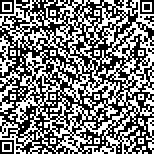朱冬燕,吉桧媛,邱晨枫,等.经皮耳迷走神经电刺激联合改良强制性运动疗法对脑卒中后偏瘫患者上肢功能的影响[J].中华物理医学与康复杂志,2025,47(3):204-208
扫码阅读全文

|
| 经皮耳迷走神经电刺激联合改良强制性运动疗法对脑卒中后偏瘫患者上肢功能的影响 |
|
| |
| DOI:10.3760/cma.j.cn421666-20231110-00904 |
| 中文关键词: 经皮耳迷走神经电刺激 改良强制性运动疗法 脑卒中 上肢功能 |
| 英文关键词: Stroke Transcutaneous nerve stimulation Auricular vagus nerve stimulation Constraint-induced movement therapy Upper limb function Hemiplegia |
| 基金项目:江苏省卫生健康委科研项目(M2021106);南通市卫生健康委科研项目(QNZ2023025) |
|
| 摘要点击次数: 2143 |
| 全文下载次数: 1999 |
| 中文摘要: |
| 目的 观察经皮耳迷走神经电刺激(taVNS)联合改良强制性运动疗法(mCIMT)对脑卒中后偏瘫患者上肢功能的影响。 方法 招募符合纳入和排除标准的脑卒中后偏瘫患者71例,按随机数字表法将其分为taVNS组24例、mCIMT组23例和联合组24例。3组患者均接受常规康复治疗,taVNS组在常规康复治疗的基础上增加taVNS治疗,mCIMT组在常规康复治疗的基础上接受mCIMT同步taVNS假刺激治疗,联合组则在常规康复治疗的基础上增加mCIMT同步taVNS治疗。mCIMT和taVNS治疗均为每日1次,每次30 min,每周治疗5 d,连续治疗4周。治疗前和治疗4周后(治疗后)采用Fugl-Meyer运动量表上肢部分(FMA-UE)和上肢动作研究量表(ARAT)评估3组患者的上肢功能,采用改良Barthel指数(MBI)评估3组患者的日常生活活动能力,同期检测3组患者运动诱发电位(MEP)的潜伏期和波幅。 结果 治疗后,3组患者的FMA-UE评分、ARAT评分、MBI评分、MEP潜伏期和波幅较组内治疗前均显著改善(P<0.05),mCIMT组治疗后的FMA-UE评分、ARAT评分、MBI评分、MEP潜伏期和波幅均显著优于taVNS组治疗后,差异均有统计学意义(P<0.05),联合组治疗后的FMA-UE评分[(40.83±4.54)分]、ARAT评分[(23.63±5.08)分]、MBI评分[(71.29±9.36)分]、MEP潜伏期[(21.98±1.07)ms]和波幅[(1.26±0.22)mV]均显著优于taVNS组和mCIMT组治疗后,差异均有统计学意义(P<0.05)。 结论 taVNS联合mCIMT不仅可以显著改善脑卒中后偏瘫患者的上肢功能和日常生活活动能力,还可促进其中枢神经功能的恢复。 |
| 英文摘要: |
| Objective To observe the effect of combining transcutaneous stimulation of the auricular vagus nerve (taVNS) with modified constraint-induced movement therapy (mCIMT) on the upper limb function of hemiplegic stroke survivors. Methods Seventy-one hemiplegic stroke survivors were randomly divided into a taVNS group of 24, an mCIMT group of 23 and a combined group of 24. In addition to conventional rehabilitation therapy, the taVNS group received taVNS therapy, the mCIMT group received mCIMT, while the combined group received both for 30 minutes a day, 5 days a week for 4 weeks. Before and after the treatment,everyone′s upper limb function was evaluated using the Fugl-Meyer upper extremity assessment (FMA-UE) and the Action Research arm test (ARAT). Ability in the activities of daily living (ADL) was quantified using the modified Barthel index (MBI). The latency and amplitude of motor evoked potentials (MEPs) were also measured. Results After the treatment, significant improvement was observed in the average FMA-UE, ARAT and MBI scores. MEP latency and amplitude had also improved. The averages in the mCIMT group were then significantly better than among the taVNS group. Conclusions taVNS combined with mCIMT can significantly improve the upper limb function and ADL functioning of stroke survivors with hemiplegia. It can also promote the recovery of central nervous system function. |
|
查看全文
查看/发表评论 下载PDF阅读器 |
| 关闭 |